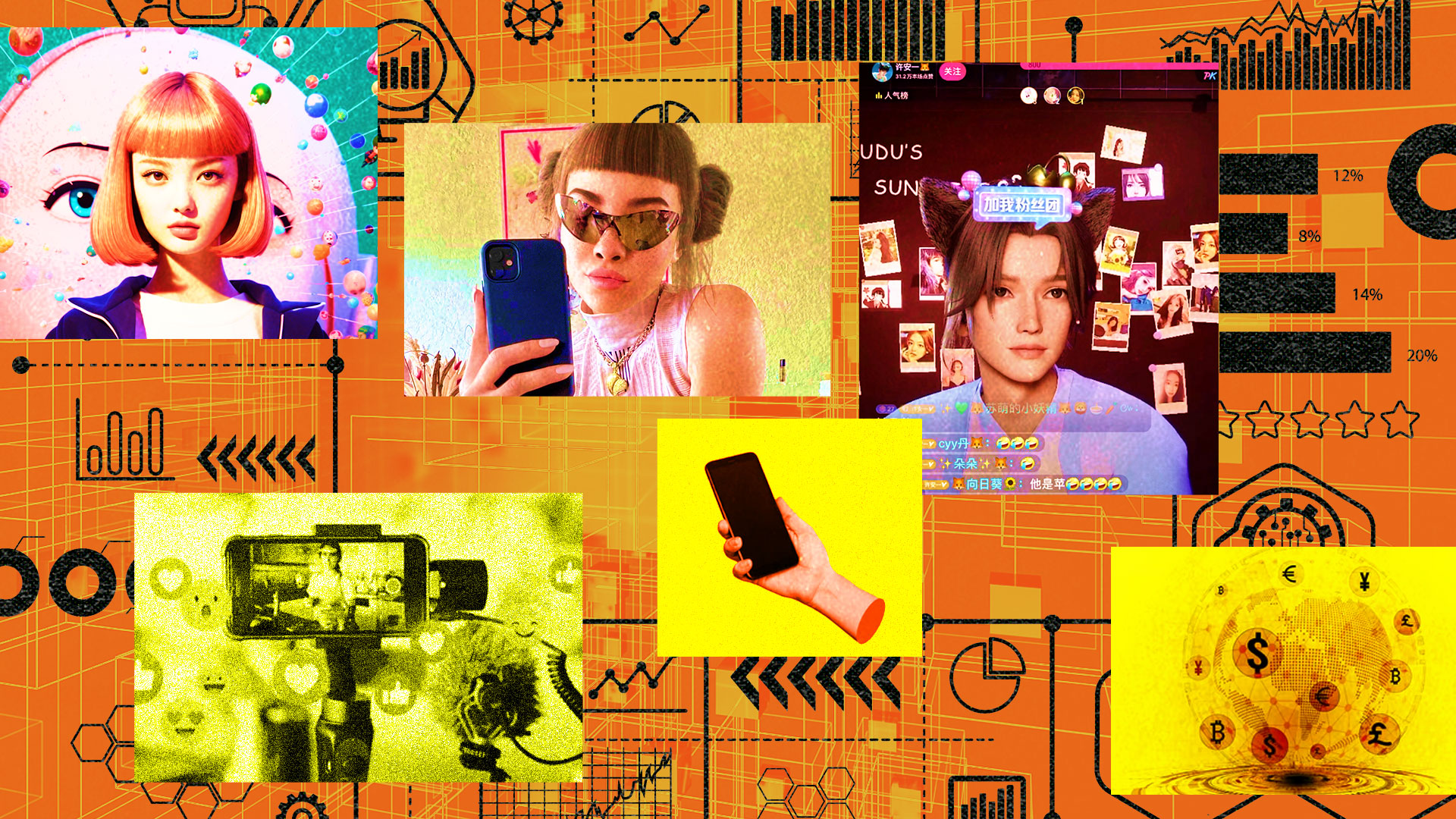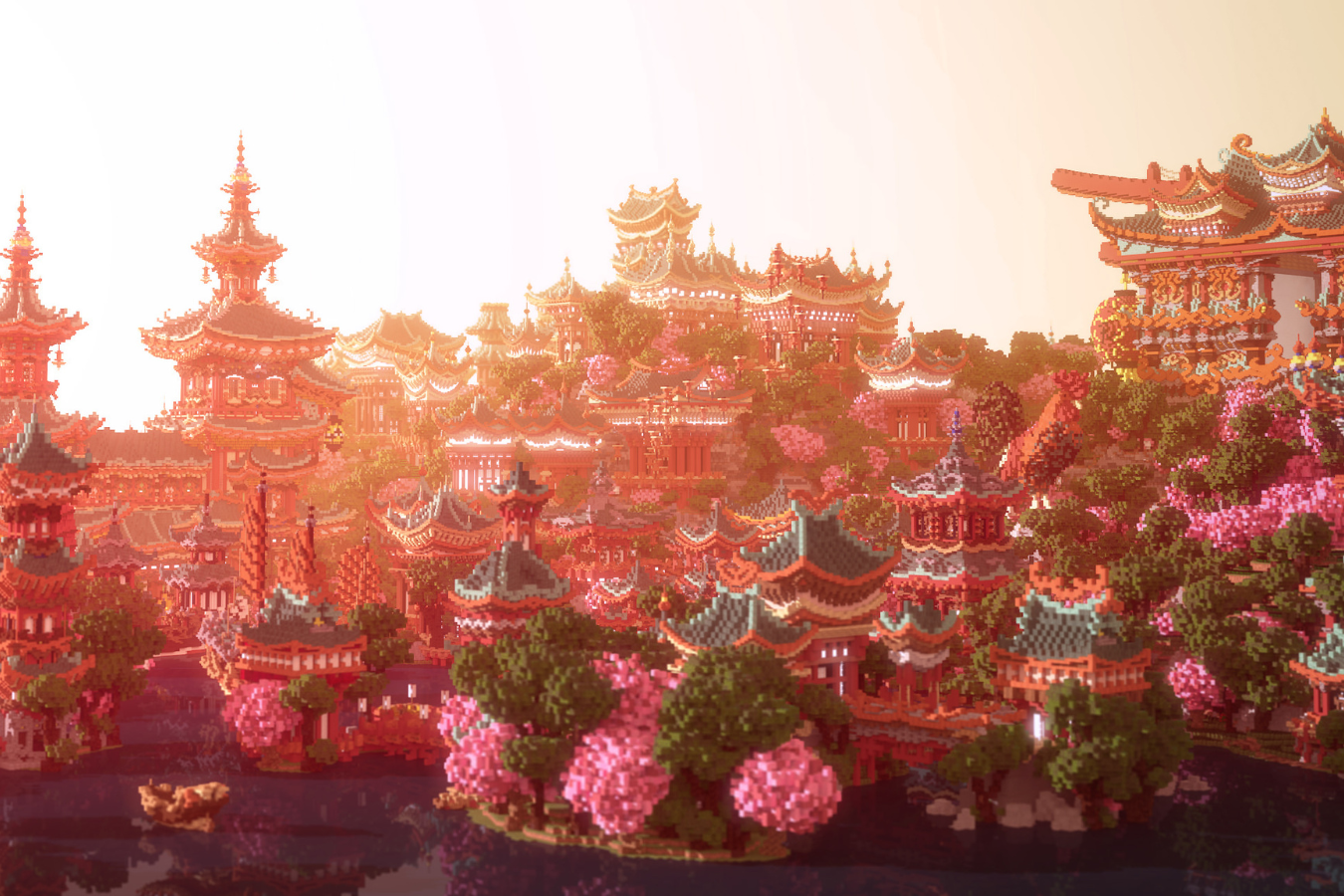Guangzhou artist Cao Fei’s major solo show Blueprints, at Serpentine Galleries in London ought to have marked the latest international achievement from one of China’s most interesting artists when it opened on March 4. Instead, it was shuttered not long after due to the outbreak of Covid-19 around the globe.
“I tried to distract myself with Zoom sessions and playing with my children,” Cao says of her time during the early stages of the pandemic. “Now I think about it, it was such a surreal and unpleasant experience.”
Interestingly, themes of the surreal and the disconnect that technology can sometimes induce are fully present in Cao’s London show, which reopened this week and will run until September 13, displaying two decades of her artistic output.
Reviews of the exhibition thus far have been positive, with visitors fascinated by the breadth and scope of topics that she has dealt with over the course of her career. The seemingly disconnected scope of Cao’s interests is testament to her insatiable curiosity. “The sense of randomness has always been playing a role in my life,” she says. “I tend to believe it is some sort of fate, such as if one happens to witness a certain scene in the city, a certain state of a person, a certain commercial one saw on TV, a certain sentence, a certain piece of news, and these things will all automatically fall into our consciousness.”
Born in Guangzhou in 1978, the year that Deng Xiaoping implemented the policy of Reform and Opening Up that led to China’s rapid economic development, Cao’s work also revels in the manifold waves of industrialization and progress that the the country has gone through in its 70-year history.
One of her first major successes, RMB City, was first seen in 2007. Based around technology provided by the online platform Second Life, the work was an attempt to present misunderstandings about China and “the East,” via images such as a floating panda, a seemingly sunken and rusty version of the Bird’s Nest Stadium in Beijing, as well as other famous buildings from the capital, such as the CCTV Headquarters and the entrance to The Forbidden City.

“RMB City.” Courtesy of the artist, Vitamin Creative Space and Sprüth Magers

“RMB City.” Courtesy of the artist, Vitamin Creative Space and Sprüth Magers

“RMB City.” Courtesy of the artist, Vitamin Creative Space and Sprüth Magers
Speaking about RMB City, Cao tells us: “The misunderstanding between in and out of China, as well as the lack of understanding of Chinese society by the outside world are two extremely complex issues, they come from differences of culture, systems, and history. On the one hand, misunderstanding comes from a sense of distance and lack of objectivity and in-depth understanding. On the other hand, China does still have many problems of its own.”
Misunderstanding comes from a sense of distance and lack of objectivity and in-depth understanding
Her work also draws on historical stories and how they relate to our modern lives, while also making repeated reference to community. When the much-discussed topic of urban renewal and expansion in Chinese cities comes up, she says, “Farmland has become township, villages have transferred into skyscrapers, suburbs have been planned as future CBDs, old houses and apartments have been demolished, even the commercial districts developed during the early years of Reform and Opening period are now facing stagnancy — home appliances malls, clothing street markets, and late night foot stalls depicted in the movie Working Girl [特区打工妹]. Under today’s industrial or even post-industrial transformation in cities like Beijing and Shanghai, there is an urgent need to revitalise these neighbourhoods.”
One of the centerpieces of the exhibition at Serpentine Galleries is her feature film Nova, which speaks about the ties between Russia and China, as the latter created its first computer in the middle of the 20th Century. The relationship between the two countries is borne out through the story of love between a Chinese and Russian scientist, as well as the Chinese scientist’s son, with gorgeous and iridescent atmospherics on display.

“Nova.” Courtesy of the artist, Vitamin Creative Space and Sprüth Magers

“Nova.” Courtesy of the artist, Vitamin Creative Space and Sprüth Magers
Her fascination with the Sino-Soviet relationship, and the legacy of Russian influence in China was spurred, in part, by the location of her Beijing studio at Hongxia Theater, which is steeped in the history of the two countries’ collaborative efforts.
“The name ‘Hongxia Theater’ itself was a commemoration of the Leningrad Red Dawn Factory, a sister unit of the State-Owned 738 Factory,” she explains. “What triggered me was how little people actually know about this important part of history which is embedded in this nearly forgotten neighbourhood: the production of China’s first computer, the Hongxia Theater, the Soviet-style buildings in the Jiuxianqiao community, and even the Russian folklore sung by retired old employees.”
Elsewhere, The Eternal Wave spotlights both the possibilities and shortcomings of virtual reality technology. Made in collaboration with Acute Art, who have previously worked with the likes of pop artist KAWS and Icelandic installation artist Olafur Eliasson, The Eternal Wave is “an exploration of how the early radio signals of mankind traveled through history to the future, and were received by people in different dimensions.”
https://www.instagram.com/p/CDdIdOHD0dq/
Cao has previously been critical of the capabilities of modern virtual reality technology, though the format continues to fascinate her and stimulate her imagination.
This sentiment is not altogether disconnected from how she feels about the idea of technological advancement in modern life. “I don’t think this is an era of exploring the vast possibilities of the digital age,” she says. “Don’t get me wrong, exploration is definitely important and we have achieved so much, but it is only a certain ‘honeymoon moment’ in an era full of crises. I believe that people are still eager to return to the ‘real’ life. Caused by the lockdown and various social interruptions, there is a serious anxiety among us right now that makes us deeply rely on drifting in the virtual world without an exit.”

“The Eternal Wave.” Courtesy of the artist, Acute Art, Vitamin Creative Space and Sprüth Magers
The Covid-19 crisis may also yet lead to more crises, as she sees it. “From trade wars to cold wars to even future quasi hot wars, a constant level of panic and chaos may become our new normal. But every individual’s life is thus deeply affected and even mentally hijacked under the current reconfiguration of our world: many of my friends’ parents and even young friends have suffered from depression due to the current turmoil, some people’s parents have passed away in the midst of international travel restrictions, but since most of the international flights were not resumed, they cannot even return to their hometown for the funeral. I can’t even imagine their pain.”
A constant level of panic and chaos may become our new normal
In this case, Cao’s work is more important than ever, as it dwells so vividly and so deeply on the disconnect between real and virtual worlds.
As a mother who dwells so much on what the future may look like, she is particularly insightful on this point when discussing her son. “My son is also very into games such as Roblox. As a result, he has stopped exercising and his life really lacks of real social interactions,” she says. “What he talks about all day are games; I am afraid the real world does not seem to be exciting at all in his eyes [relative to the virtual world], and real life seems to only provide the basic demands of existence [eating, drinking, shelter]. But my son asked me a serious question the other day: what will he live on in the future?”
Cover image: “Nova.” Courtesy of the artist, Vitamin Creative Space and Sprüth Magers


















